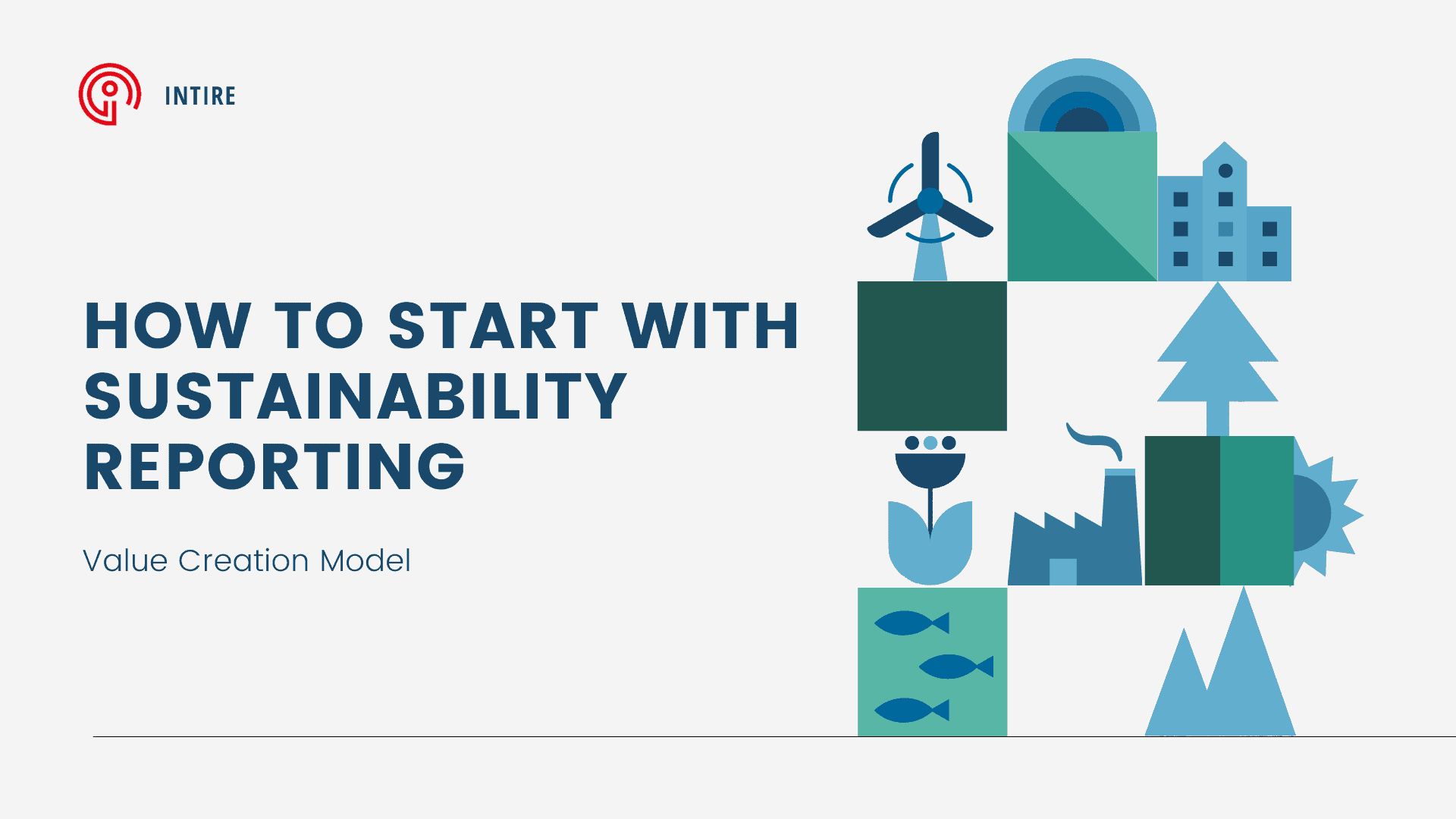The Corporate Sustainability Reporting Directive (CSRD) is impacting companies in a significant way. As reporting organizations are working to assess the impact of the Directive, we receive an increased number of questions on where to start the journey to become CSRD-compliant. CSRD requires large companies and certain public-interest entities to disclose information on their ESG impacts in their annual reports.
As discussed in part one of our mini-series “How to start with sustainability reporting: Double materiality”, one important principle of sustainability reporting is double materiality, which states that companies should identify their reporting topics based on both the financial materiality, as well as the traditionally known impact materiality.
Before diving into the Value Creation Model, make sure you have read our first series by clicking the link. As briefly touched upon, an important step in your materiality assessment is the creation of your company’s Value Creation Model (VCM).
Value Creation
Value creation is the foundation of your organization. It differentiates your organization from its competition, secures long-term customers, and brings distinct meaning to the brand and the solution. Value is created through your organization’s business model, which takes inputs from the capitals, such as intellectual capital or natural capital, and transforms them through business activities and interactions to produce outputs and outcomes that, over the short, medium, and long term, create or destroy value for your organization, its stakeholders, society, and the environment.
Although organizations aim to create value overall, resources and relationships, also referred to in the Framework as different types of “capital”, may be destroyed or depleted in the process of conducting business activities. Therefore, whenever the term “value creation” is used, it should be interpreted to include actual or potential value destruction or depletion.
How to start with sustainability reporting at Intergamma
We finish of this miniseries with a webinar. In this webinar, we help you get started with sustainability reporting and preparing for the upcoming CSRD with the help of sustainability manager Margreeth Pape at Intergamma. She will share her experience regarding setting up the sustainability reporting process, keeping in mind the important milestone at intergamma of their first sustainability report being published this year. We discuss the building blocks of Intergamma its sustainability management and reporting journey, such as deciding on your sustainability ambition-level, materiality analysis, setting and committing to goals and targets, and engaging your organization in the sustainability journey ahead.
Value Creation Model
A Value Creation Model (VCM) shows how your company transforms inputs through business activities into outputs and outcomes that aim to fulfil your strategic purpose: valuable resources and relationships (inputs) into results (outputs) that create value for stakeholders and society (outcomes and impacts).

The relationship of the different types of capitals is shown in the Framework above. Financial & manufactured capitals are often already reported on in the standard annual report. Intellectual, social & relationship, and human all relate to the activities that people do which add value/are used as inputs. Natural capital is the environment used in the other capitals.
Value Creation Model and Double Materiality
Our best practice is to consider your VCM capitals in the double materiality assessment, specifically for the financial materiality assessment. The capital classification captures the key factors of value creation and can be used as a reference to perform the financial materiality analysis. Please note that financial materiality in the double-materiality context of sustainability reporting is known as “the identification and assessment of potential triggers of financial effects”.
– e.g. your reliance on resources and relationships, which are perfectly depicted in your VCM. Therefore, the VCM is an important and even crucial framework to use to perform a successful, compliant, and meaningful double materiality assessment.
We believe that framework use is only the means to the end goal: meaningful and valuable reporting – that are aligned with your strategic pillars, goals, and organization wide values. The Value Creation Model is therefore a valuable tool not only in your materiality assessment, but also in the alignment of your sustainability reporting with your organization wide strategy and activities. Therefore, we ensure our customers are working towards a meaningful reporting strategy.
Curious how we do it and in what way we can help your organization? Don’t hesitate to contact one of our experts.




